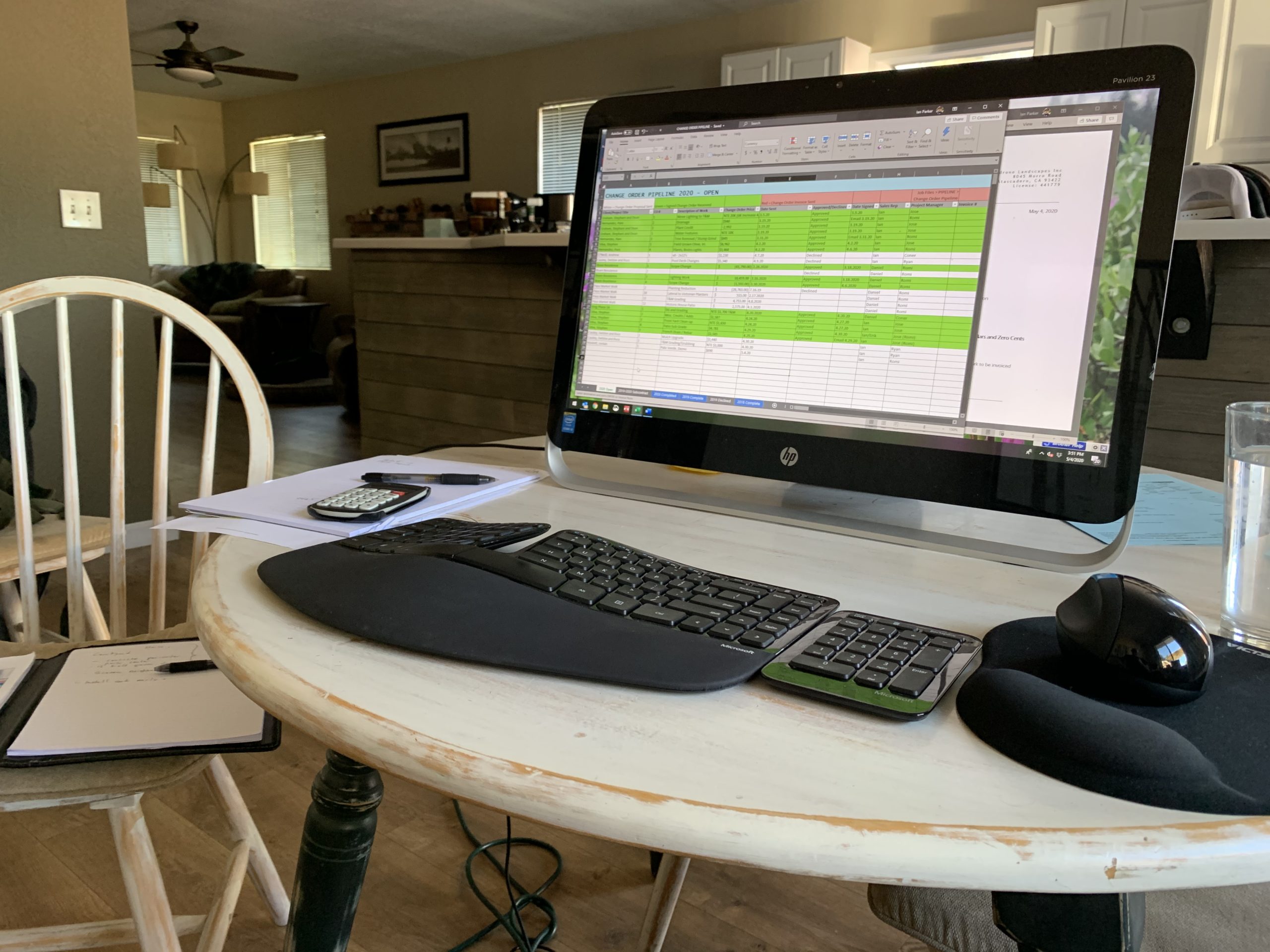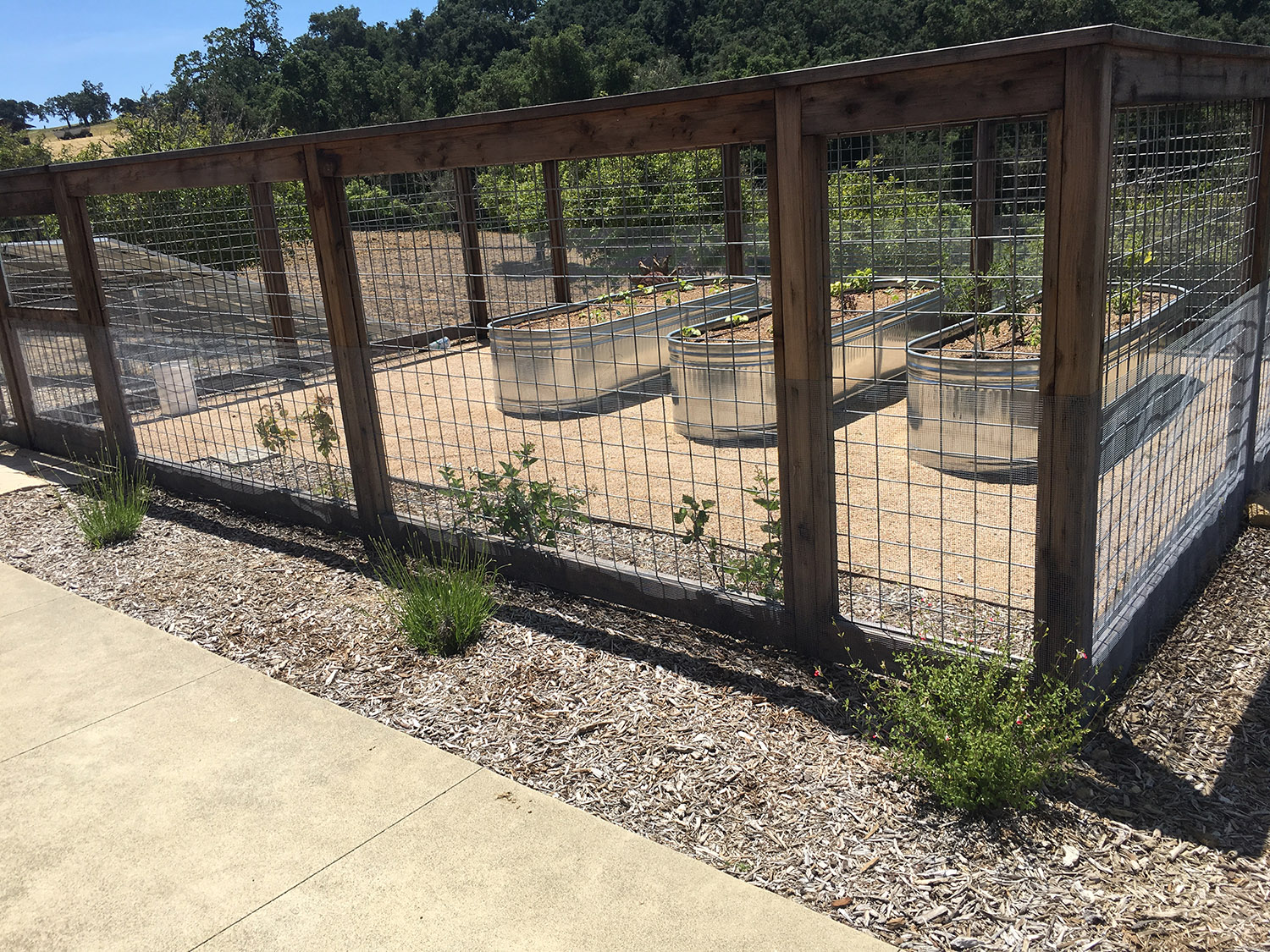
Work From Home: Designers in Their Home Habitat
But these days are not the norm. We’re currently working from our home habitat – roaming our yards and living rooms, and keeping a safe social distance. While on one hand, it’s nice to have time to work on our own gardens and yards, it’s also been a challenge to work away from the office, field, and teammates.
#WFHLife: The Pros
For Megan Savage, working at home has some real benefits. “It’s a flexible workspace,” she says. “I usually set up at either the couch in my living room or at my dining table. But, on nice days, I can sit at my patio table in the sunshine while I work; it looks over a small greenbelt, and my neighbor’s jasmine is blooming right now so it’s very peaceful. And my dog Lily is happy I’m home!” Ian Parker, too, finds some solace in his own personal landscape, saying that one of the things he likes best as he stays at home is the opportunity to “work in my beautiful backyard and spend time with my best doggie friend Daisy.”

Both Jill Bleher and Christy Dufault are enjoying the company of feline friends. Christy says that she’s “actually enjoying the solitude of working at home. Of course, having animals in the house helps. My cats are keeping me company.” For Jill, her cat Destiny has been one of the best parts of working from home, along with seeing her husband Alec throughout the workday. When sharing social isolation with anyone, from friends to family, it’s a relief to have good company.

#WFHLife: The Cons
Even with the designers who have people or pets at home, the isolation can be a new kind of challenge, missing the company of both coworkers and social ambiance. For Megan, it’s the chatter she yearns for. She misses “being able to talk to my coworkers without having to pick up a phone.” Likewise, Christy says, “It will be nice to see everyone and be able to communicate in person!” Ian misses collaborating with his “lovely teammates”. Being unable to share ideas with one another so effortlessly is truly one of those things that we don’t realize we’ll miss until it’s gone.


While we all work together to make sure this pandemic passes as quickly as possible, we take solace in our surroundings and look forward to the friendships, teammates, and work spaces we’ll come back to when this is over. In the meantime, stay safe and upbeat – we look forward to seeing you in the office or field soon!












